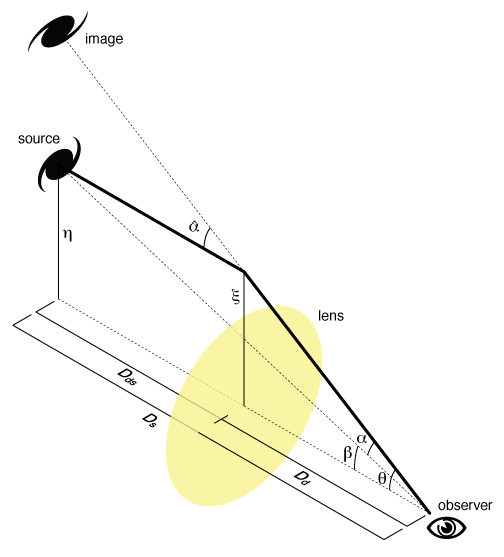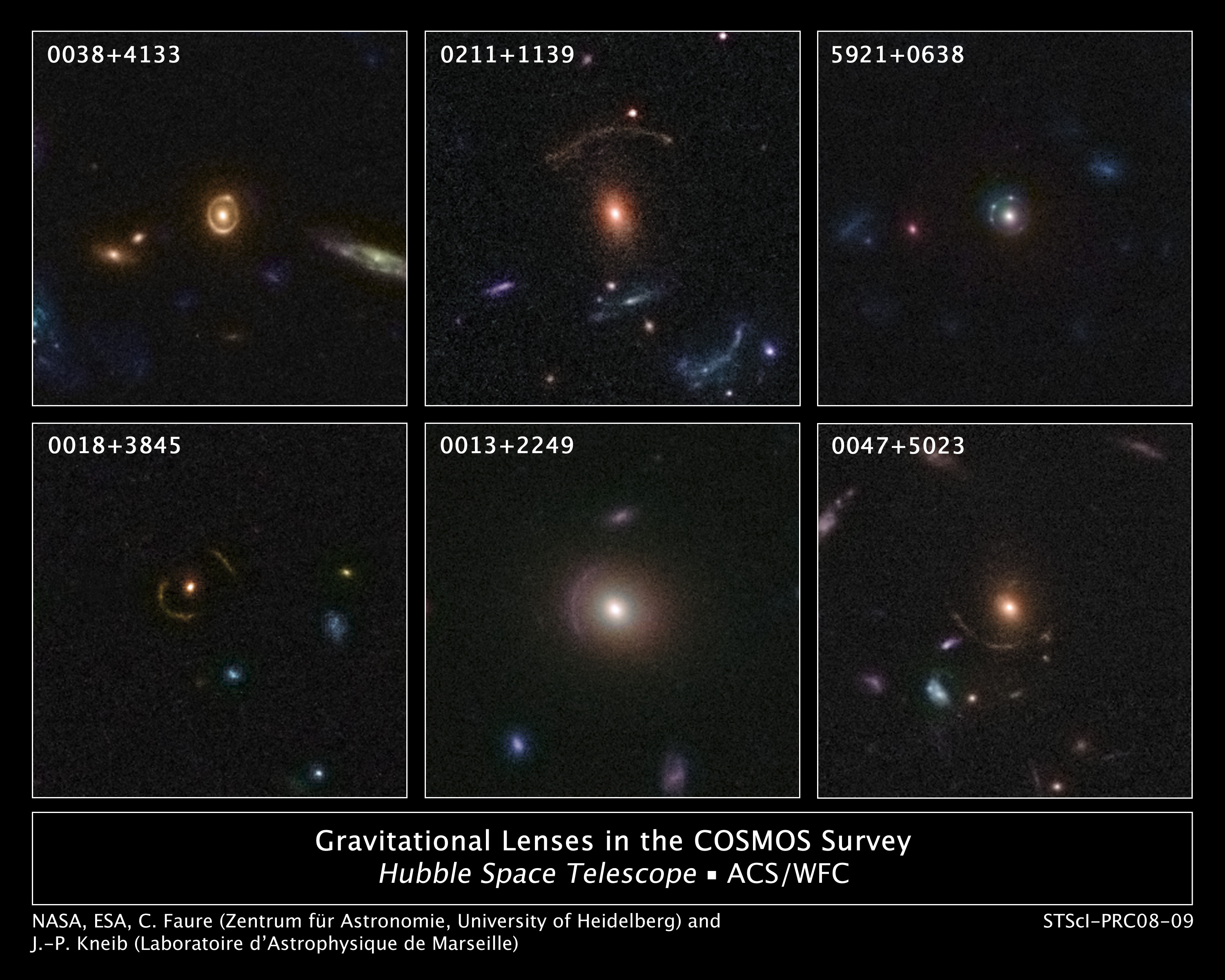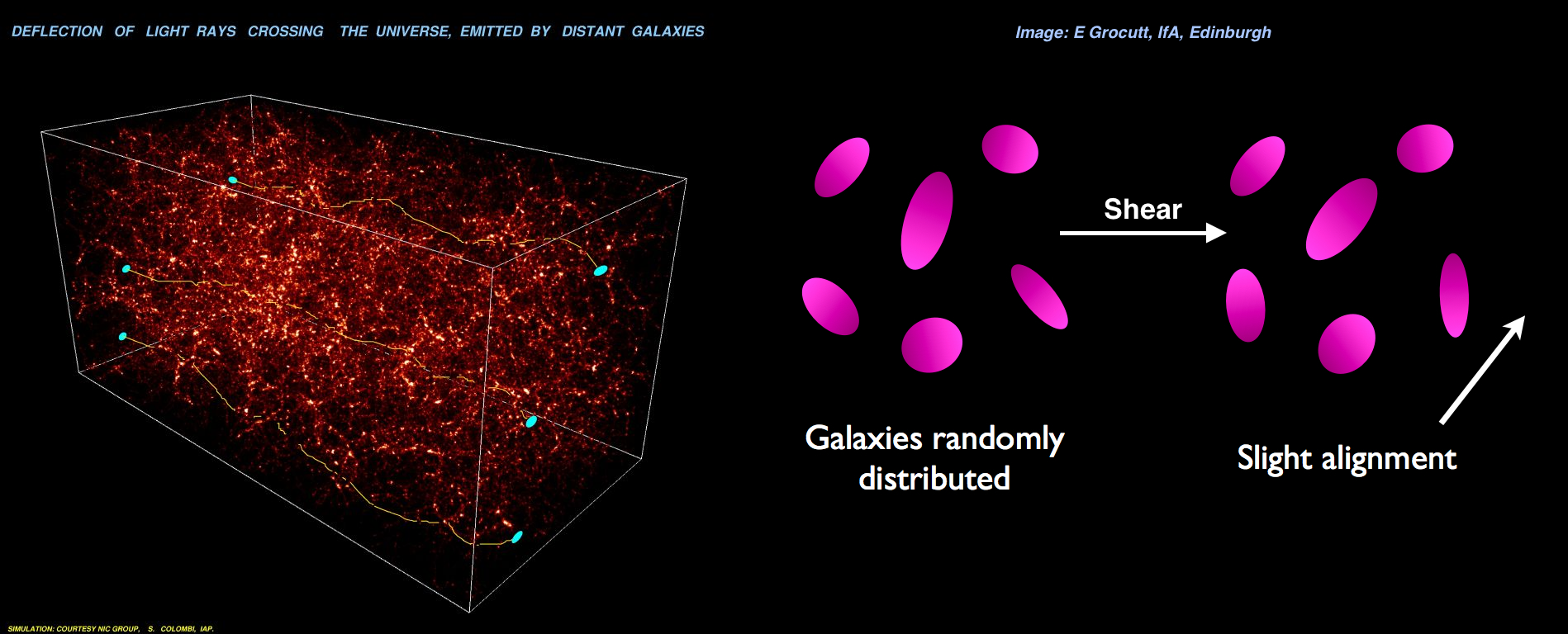
Introduction

According to General Relativity, the light from a background source is deflected, distorted and (de)magnified by intervening objects along the line of sight. Einstein's prediction was confirmed in 1919 when the apparent angular shift of stars close to the limb of the Sun was measured during a total solar eclipse. The quantitative agreement between the measured shift and Einstein's prediction was immediately perceived as compelling evidence in support of the theory of General Relativity. The deflection of light by massive bodies is now referred to as Gravitational Lensing.
It is shown in Fig. 1 that the basic geometry of a typical gravitational lensing system. The light from the source galaxy is deflected by the foreground lens (yellow ellipsoid) with a physical deflection angle \hat{\alpha} (or speak of a reduced deflection angle {\alpha}), and the lensed images can be observed at \vec{theta}. Simply, the lensing equation can be written as: \beta = \theta - \alpha.
More coming soon...
Strong Lensing

Strong gravitational lensing happens when the deflection angle is large enough to produce multiple images, arcs, or even Einstein rings. Fig. 2 shows typical strong lensed observations, it includes, for point-like background sources, there will be multiple images (up-right panel); for extended background emissions, there can be arcs (up-middle panel) or rings (up-left panel). Applications of strong lensing in astrophysics and cosmology include a wide range of problems, e.g., reconstructing the lens mass distribution, identifying faint or dark substructures, detecting galaxies at high redshift, measuring the Hubble constant.
More coming soon...
Weak Lensing

Weak gravitational lensing refers to the lensing effects with extreme small deflection angles. It mainly happens on extra-galactic scales, galaxies, clusters of galaxies, and even larger scale such as the filamentary structure of the cosmic web. Weak lensing causes the images of high-redshift, background galaxies to be distorted. First, weak lensing can be applied to measure the mass distribution of galaxies, galaxy clusters, and cosmic web. Second, one can use the statistical properties of the distortion of sources galaxies to constrain cosmological models. Moreover, Weak lensing is a potential tool to probe the cause of the accelerated expansion of the universe, and to distinguish between dark energy and modified gravity.
More coming soon...
Micro Lensing

Micro gravitational lensing is an special case of strong lensing when the deflection angle is about micro arcsecond by stars. When a source (a distant star or quasar) gets sufficiently aligned with a lens, the bending of light due to the foreground gravitational potential leads to two distorted but unresolved images resulting in an observable magnification. The details of light curves depends on the mass of the lens as well as on the relative proper motion between the background 'source' and the foreground 'lens' object (See Fig. 4). It can be used to detect objects that range from the mass of a planet to the mass of a star, even when the objects that emit little or no light, so micro lensing is considered to be one of the most powerful tool to discover planets at truly great distances from the Earth.
More coming soon...
Useful Links
Lectures on Gravitational Lensing
SFA Gravitational Lensing Course
Numerical Methods in Gravitational Lensing